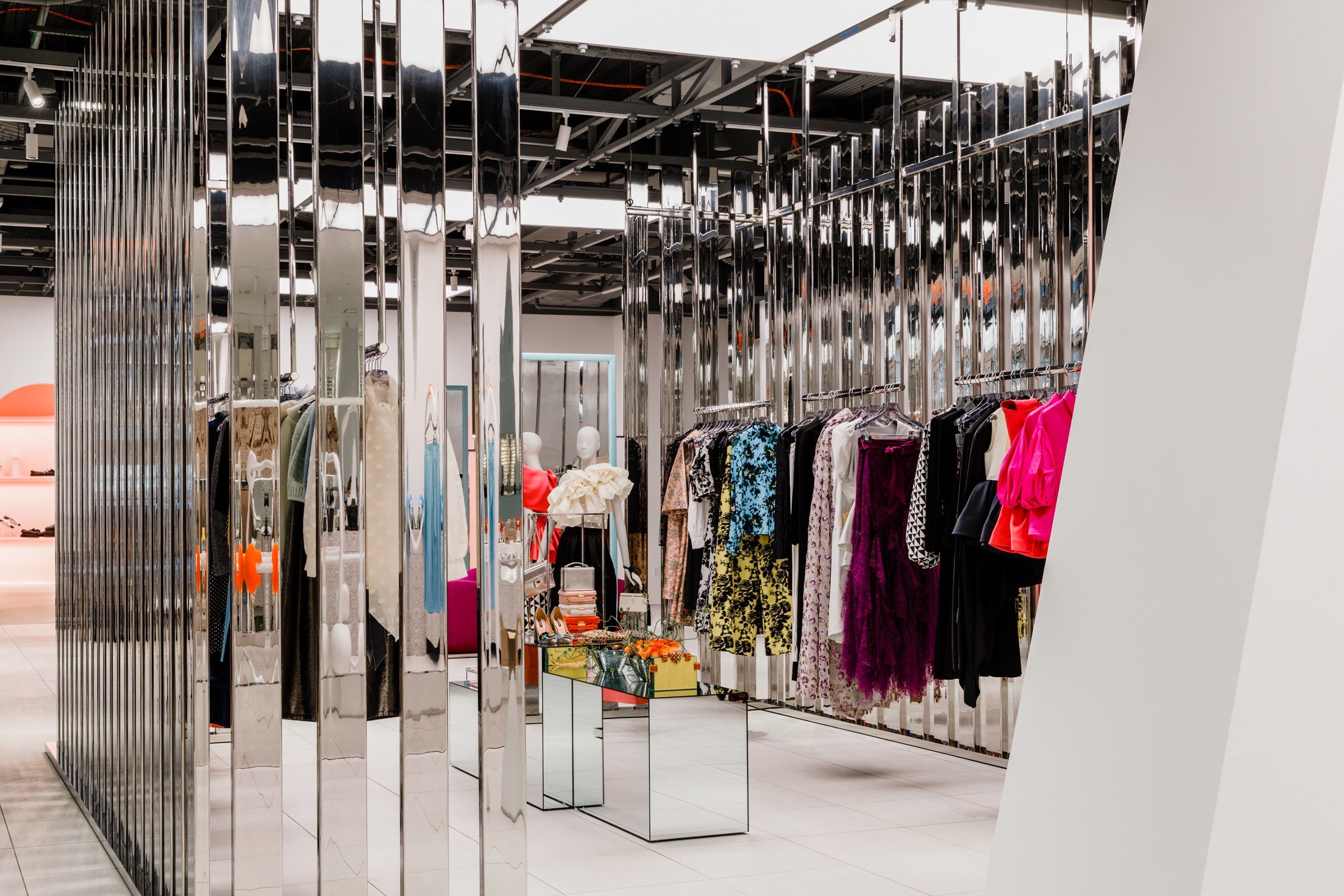Discover the most up to date Patterns in Boutique Fashion for every single Season
Discover the most up to date Patterns in Boutique Fashion for every single Season
Blog Article
A Deep Dive Into the World of High-Fashion Runways: Recognizing Clothing as Art
High-fashion paths have arised as sectors where clothing transcends its utilitarian beginnings, progressing right into an innovative kind of artistic expression. Developers, a lot like skillful artists, weave detailed narratives through shade, kind, and textile, testing standard standards and redefining charm requirements. These shows are much more than mere displays; they are immersive experiences, where every stitch and seam informs a tale rich with cultural importance and avant-garde innovation. As we explore these sartorial eyeglasses, we must contemplate: what duty does fashion play fit societal worths, and exactly how does it show the ever-changing tapestry of human emotion and identification?
The Evolution of Runway Shows
The trajectory of runway programs has changed substantially over the decades, evolving from special industry events to exciting spectacles that mix fashion with art. Traditionally, runway programs were intimate events, held in ateliers or little venues, mostly attended by purchasers and market insiders. These early discussions concentrated on the garments' craftsmanship and commercial stability, using a functional and direct screen of seasonal collections.
As the garment industry increased, the nature of runway shows began to alter. The 1970s and 1980s marked a turning point, with designers looking for to identify themselves through even more staged presentations. This age saw the surge of fancy collections, choreographed designs, and thematic stories, proclaiming a new age where the path became an experiential platform. The programs changed right into a type of storytelling, where each collection conveyed a distinct narrative or idea.
In recent times, technology and social media sites have better reinvented runway shows, making them easily accessible to an international audience. Livestreaming and electronic systems have actually equalized fashion, allowing lovers worldwide to witness these events in real-time (boutique fashion). This advancement mirrors a more comprehensive cultural shift, where high-fashion runways serve as a dynamic crossway of performance, design, and technology
Designers as Enthusiast Artists
Designers in the high-fashion market have actually obscured the lines in between useful garment creation and the conceptual world of art. By accepting creative techniques such as sculpture, paint, and avant-garde installations, designers craft garments that challenge traditional fashion norms and boost them to art kinds.
Visionary developers attract inspiration from a myriad of resources, consisting of abstract art, historic referrals, and personal stories. They have an one-of-a-kind capacity to visualize and appear ideas that press the borders of conventional style, frequently redefining aesthetic paradigms at the same time. This innovative resourcefulness is showcased through significant silhouettes, cutting-edge materials, and elaborate workmanship, which welcome viewers to experience fashion as even more than simply wearable things.
Furthermore, the runway works as a canvas for these musicians, where lighting, music, and set style coalesce to develop immersive experiences. These discussions are not merely displays of clothes however are managed efficiencies that stimulate feeling and prompt thought, affirming the designer's role as a true artist in the contemporary cultural landscape.
Cultural Influences in vogue
Cultural tapestry weaves its intricate patterns right into the textile of style, influencing designers globally. The vibrant interchange of social stories, traditions, and symbols educates and influences collections that elegance high-fashion runways.
The influence of society on fashion is frequently seen in the reinterpretation of traditional garments and patterns. The use of Japanese bathrobes, Indian saris, or African prints in contemporary style reflects a mix of cultural authenticity and modern-day visual appeals. Designers such as Valentino's Pierpaolo Piccioli and Alexander McQueen's Sarah Burton have been understood to incorporate abundant social themes right into their couture collections, translating background into wearable art.

Development in Material and Style
Advancement in textile and layout constantly improves the landscape of high-fashion, pressing limits and redefining possibilities. Over the last few years, technological improvements have substantially added to this development, introducing materials that challenge conventional understandings. Textiles embedded with smart fibers, with the ability of changing shade or managing temperature, are no longer confined to the world of sci-fi. Developers are progressively checking out the integration of technology, such as 3D printing, which enables the creation of complex frameworks that were formerly inconceivable.
In addition, sustainability has come to be a critical motif in material advancement. The fashion market is experiencing a surge in using environmentally friendly materials, originated from recycled plastics, organic fibers, and also naturally degradable parts. These advancements not only use new structures and aesthetic appeals but likewise address critical ecological concerns. Designers are welcoming these materials to craft garments that are both mindful and aesthetically striking of their ecological footprint.
In regards to design, progressive his explanation shapes and speculative forms are continually transforming the path. By including unconventional materials and advanced methods, designers cultivate garments that blur the line between fashion and art, setting new requirements for imagination and expression in the high-fashion ball.
Effect of Style on Culture
Fashion possesses a profound influence on culture, serving as both a representation of social identity and a stimulant for social modification (boutique fashion). Through its advancement, style has mirrored social shifts, enveloping the zeitgeist of different eras.
Moreover, style has the power to bridge cultural voids, fostering understanding and admiration among diverse groups. As globalisation accelerates, the cross-cultural exchange of style ideas ends up being increasingly substantial, promoting inclusivity and variety. The rise of streetwear, stemming from urban subcultures, highlights how style can transcend socio-economic limits, granting people a method of self-expression and empowerment.
Fundamentally, fashion is not merely regarding visual appeals; it is a vibrant pressure that influences worths, attitudes, and societal progression (boutique fashion). By continually communicating with cultural and social currents, style here remains an important part of the collective human experience

Conclusion
Developers, similar to visionary artists, orchestrate collections that mirror identification, this page emotion, and cultural stories, testing conventional visual appeals. This junction of fashion and artistry not just mesmerizes target markets worldwide however additionally influences social understandings and promotes a much deeper appreciation for social variety.

Social tapestry weaves its intricate patterns into the material of style, affecting designers internationally.Style possesses a profound influence on society, offering as both a representation of social identification and a catalyst for social modification.
Report this page